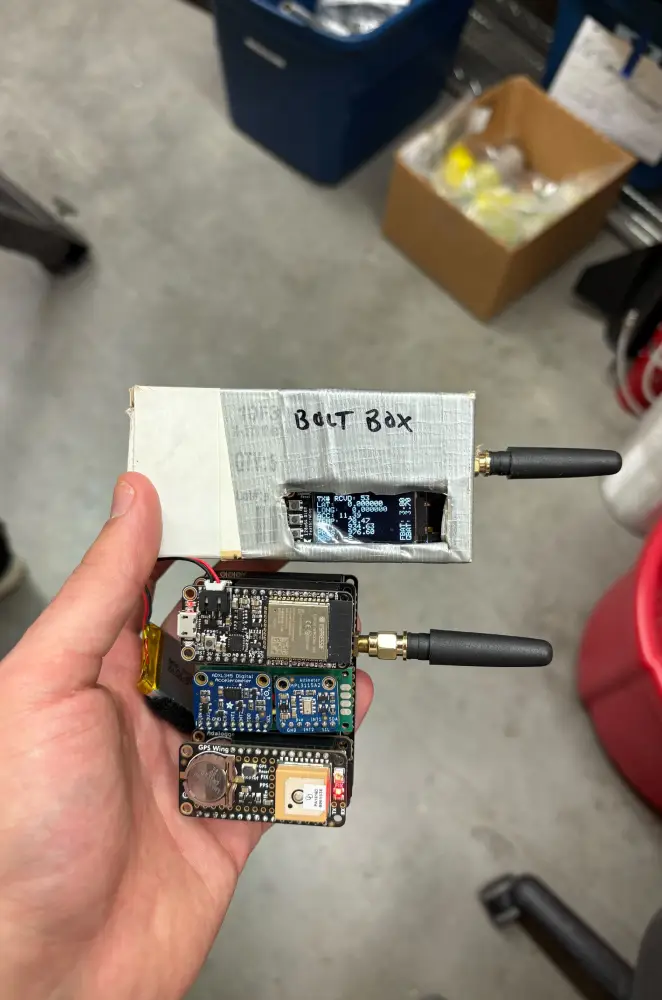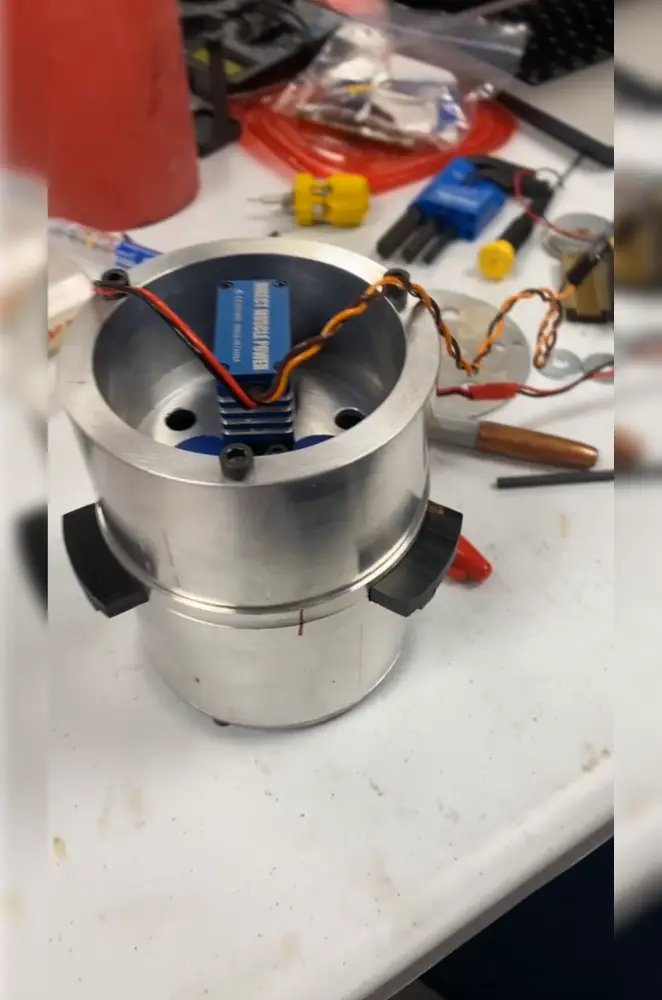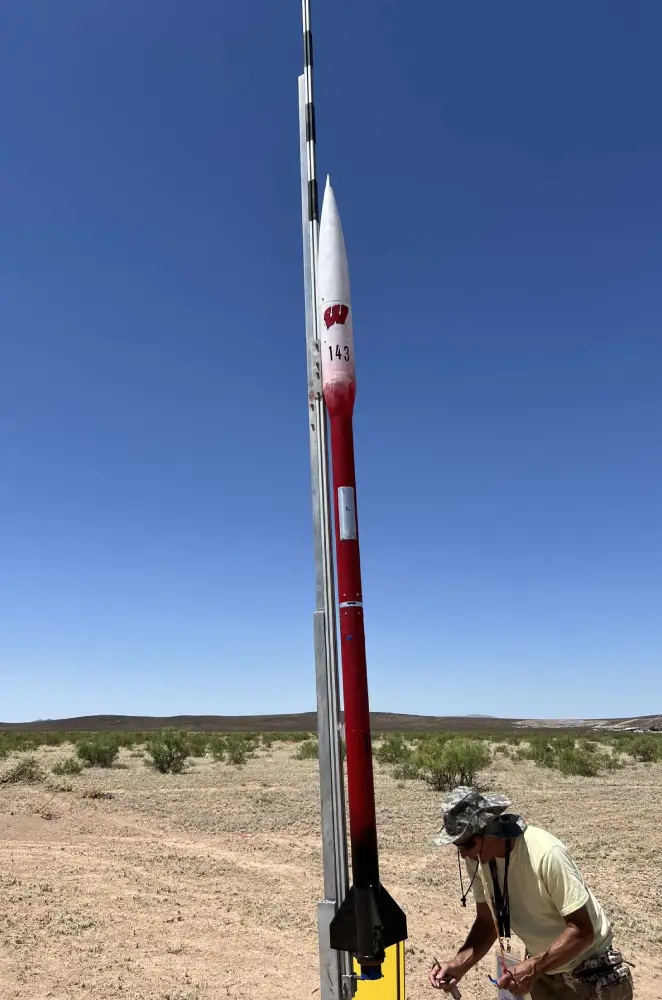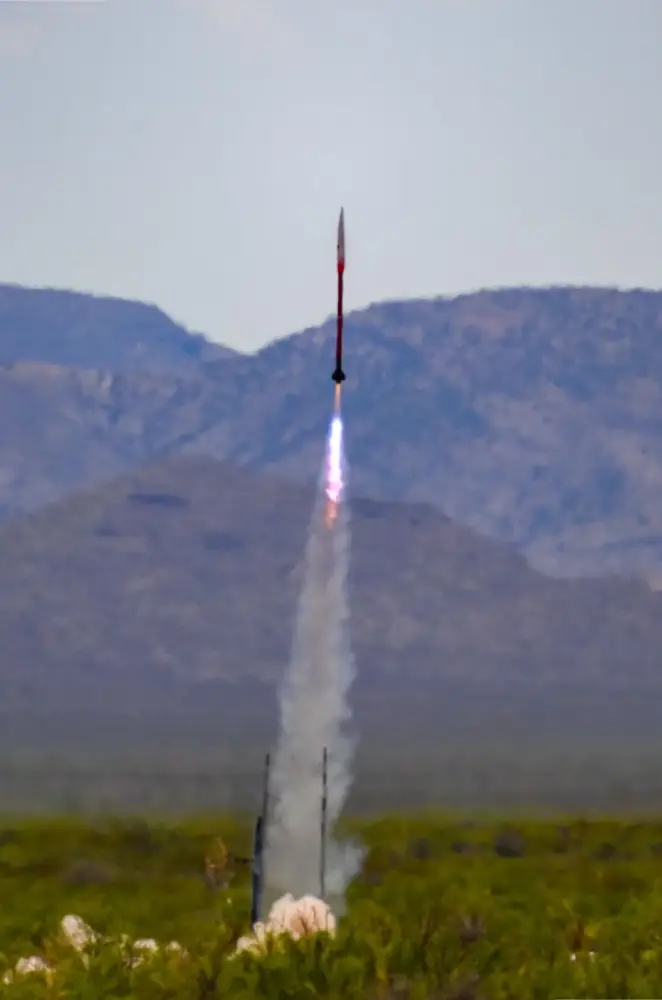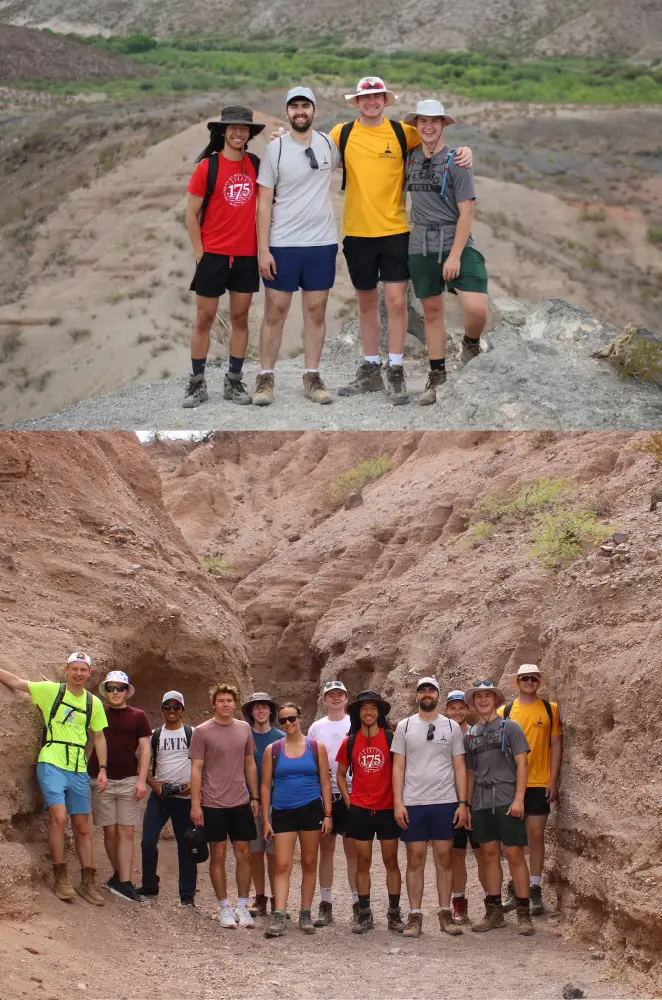AIAA Avionics
- Flight Computer (bottom) and Ground Station (top)
- Airbrakes
- Hyperion prepped for launch
- Launch
- Avionics Subteam (top) and IREC team (bottom)
Following the great success of my model airplane, I immediately began my search for an aerospace club that could continue my passion for flight in college. While touring, I found American Institute of Aeronautics and Astronautics, AIAA (now Wisconsin Space Program). While the club no longer offered any activities related with planes, the club introduced me to avionics - the electronics onboard aircraft. Being the only Computer Science major in the club, I was thrown headfirst into the group's yearlong project: A rocket named Hyperion that would compete the following summer in the Spaceport America Cup in New Mexico. I began working with others to write code onboard a flight computer that would log flight data, control the airbrakes, and transmit data over radio to a ground station.
A test flight in Rockford revealed some flaws in the code, and we worked tirelessly to fix it before launch day. After a 24-hour long drive across the country to our Airbnb in Las Cruces, we made the final adjustments to the rocket before launching it. Not only was the launch a great success, but the data we gathered was invaluable. The following semester, AIAA joined with the Space Race club in UW-Madison to form the Wisconsin Space Program, where I am now the Avionics Director. I'm fortunate to have worked with such a welcoming and capable group of engineers who were able to keep my passion alive.
